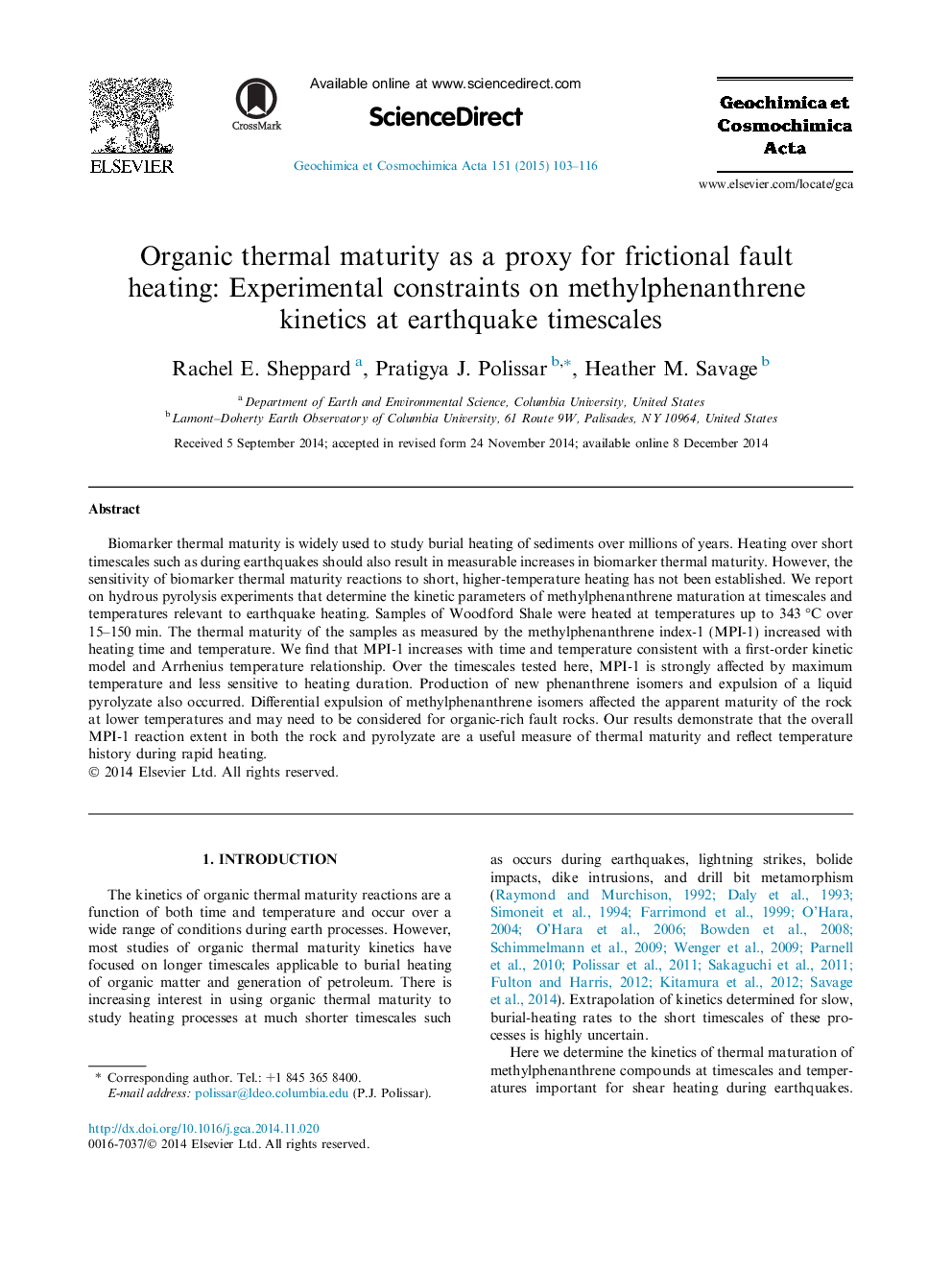| Article ID | Journal | Published Year | Pages | File Type |
|---|---|---|---|---|
| 4701911 | Geochimica et Cosmochimica Acta | 2015 | 14 Pages |
Biomarker thermal maturity is widely used to study burial heating of sediments over millions of years. Heating over short timescales such as during earthquakes should also result in measurable increases in biomarker thermal maturity. However, the sensitivity of biomarker thermal maturity reactions to short, higher-temperature heating has not been established. We report on hydrous pyrolysis experiments that determine the kinetic parameters of methylphenanthrene maturation at timescales and temperatures relevant to earthquake heating. Samples of Woodford Shale were heated at temperatures up to 343 °C over 15–150 min. The thermal maturity of the samples as measured by the methylphenanthrene index-1 (MPI-1) increased with heating time and temperature. We find that MPI-1 increases with time and temperature consistent with a first-order kinetic model and Arrhenius temperature relationship. Over the timescales tested here, MPI-1 is strongly affected by maximum temperature and less sensitive to heating duration. Production of new phenanthrene isomers and expulsion of a liquid pyrolyzate also occurred. Differential expulsion of methylphenanthrene isomers affected the apparent maturity of the rock at lower temperatures and may need to be considered for organic-rich fault rocks. Our results demonstrate that the overall MPI-1 reaction extent in both the rock and pyrolyzate are a useful measure of thermal maturity and reflect temperature history during rapid heating.
